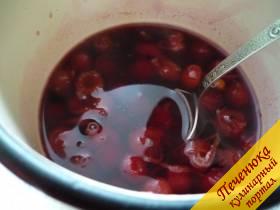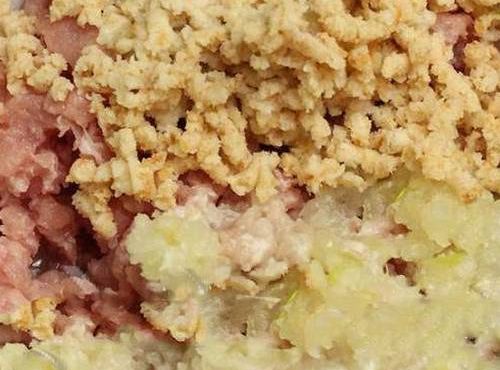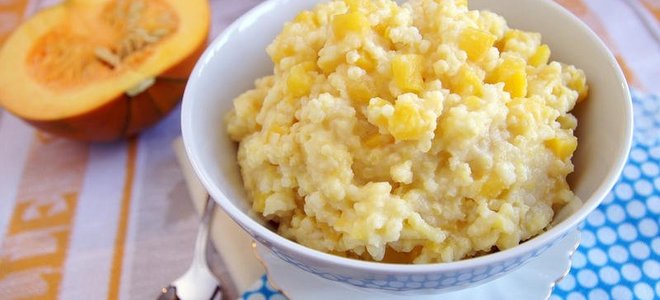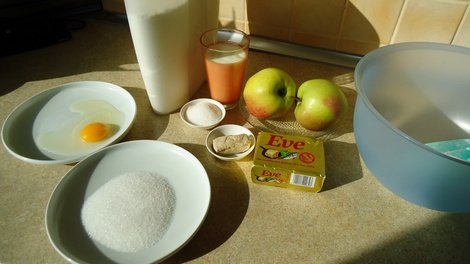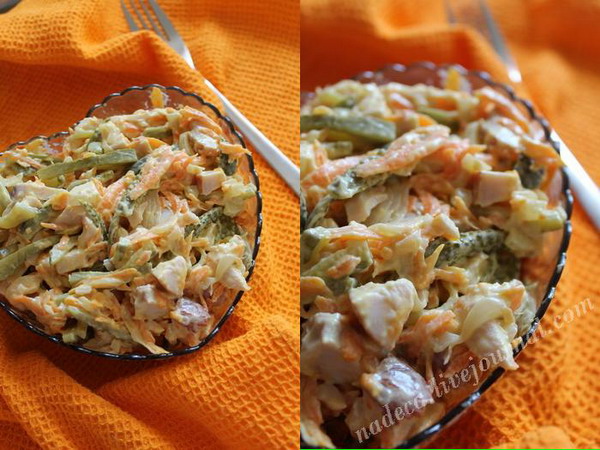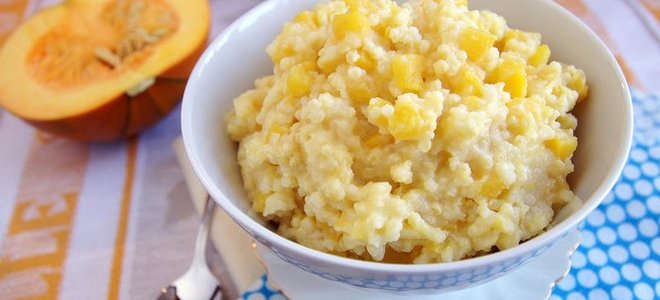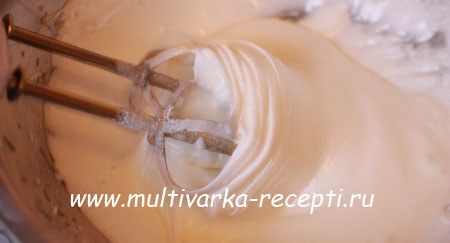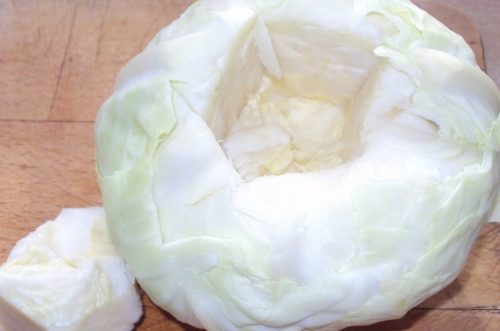Pros and cons of drinking beer for diabetics. How to use a foamy drink
Question: to drink or not to drink beer with type 2 diabetes is rhetorical, as it has only one answer for the person who was diagnosed with this. The problem is that after the verdict of the endocrinologist, the patient, as a rule, does not feel any special painful sensations, because of which he must limit himself to something.
Of course, if obesity, excessive thirst, constant going to the toilet, led to dizziness and loss of consciousness, then the diagnosis of diabetes, explaining these conditions, the threat of stroke and death, removes questions about alcoholic beverages for any sane person.
Preventive examinations and tests when applying for a job, medical education and an increase in the cultural level of the population make it possible to detect diabetes mellitus two by elevated blood sugar at a time when diabetes does not give external manifestations of the disease. “Increased sugar” is perceived as something typical of the category “salt deposits”, “overweight”. There is a diagnosis, but no pain, so why worry ?! Another thing is ARI, the flu, the manifestations of which are obvious - headache, fever and even vomiting.
Threats to Type 2 Diabetes and Control
Alcoholic traditions and plentiful feasts (even if it is a beer table) in our country fundamentally differ from a disease such as the second type of diabetes, in which the pancreas ceases to produce insulin in the proper amount and there is a violation of carbohydrate metabolism. Blood sugar can reach values \u200b\u200bof 20-30 mmol / l without visible pain.
Numerous international studies have shown that with a glucose content in the blood above 10 mmol / L, the irreversible destruction of blood vessels in all internal organs begins without pain. With the uncontrolled course of the disease, there is a threat of stroke, blindness, gangrene of the legs.
Sugar requires compliance with a whole system of measures to compensate for pancreatic insufficiency:
- blood sugar monitoring using a glucometer;
- determination of glycated hemoglobin at least once every six months;
- determination of the maximum possible volume of a single meal, in which blood sugar does not exceed 10 mml / l;
- observe certain time intervals between meals;
- comply with the permitted mode of moderate physical exertion;
- control and maintain normal weight;
- annually control vision;
- periodically visit an endocrinologist to adjust treatment.
An analysis of this system leads to the conclusion that a certain lifestyle is necessary, which is the basis for type 2 diabetes.
Alcohol and diabetes
Taking even a small amount of alcohol, whether it is beer or wine, causes an increase in appetite. The habit of satisfying oneself is difficult to overcome, and especially after the libation. The alcohol contained in beer initially increases blood sugar. To this is added sugar from the food eaten to satisfy the hunger that has arisen.
After a while, the diabetic has a sharp decrease in blood sugar, often leading to hypoglycemia. Checking whether it is possible to take sugar-lowering drugs with beer with diabetes, it is easy to lose consciousness (up to a diabetic coma). A diabetic in a state of hypoglycemia looks like a drunk and causes condescending smiles in those who do not know about the dangerous diagnosis.
A harmless glass of beer or a glass of wine for a healthy person can cause irreparable harm in type 2 diabetes in the form of a painless destruction of a capillary vessel in the kidney, eye and any internal organ. Let it be for a minute, a second, but life will become shorter, and terrible diagnoses closer. This is the answer to the rhetorical question: is it permissible to drink beer with type 2 diabetes.
The history of beer dates back hundreds of years. During this period, the nutritious drink not only has not lost its popularity, but has gained even more fans. It is brewed in almost all countries of the world, and it is rather difficult to calculate all its varieties. Thanks to beer, some nations developed real beer traditions that marked the beginning of beer festivals and carnivals.
It is no secret that beer in a sense is also a healthy drink, since it has properties that positively affect the human body, in particular, it contributes to its rejuvenation. Unfortunately, people who have high blood sugar should monitor the amount of beer consumed, following the advice of doctors. And they recommend drinking beer no more than 300 ml for those who are not yet sick with diabetes, but blood tests show an increase in blood sugar. In such an amount of beer, the carbohydrates contained in it will not be able to increase blood sugar, since their effect is compensated by the alcohol in the beer.
For those who already have diabetes, it is best to forget about beer and alcohol, because with a combination of beer and insulin, an attack of hypoglycemia can occur (blood sugar drops sharply), which in itself is quite dangerous, as it can lead to death of a person .
But yeast positively affects the human body and especially who is sick with diabetes. Doctors even prescribe brewer's yeast to prevent and treat many diabetics. They consist of 52% protein, contain fatty acids, valuable vitamins and essential trace elements. Thanks to this composition, metabolic processes are normalized, and with it the state of the liver and blood formation improve. Yeast contributes to the correction of proper nutrition, which is so important for patients with diabetes who are required to comply with food restrictions.
Brewer's yeast has become popular as a prophylaxis and treatment of diabetes not only in our country, but also in many countries of Europe. They are actively used in almost all medical institutions.
Beer drinking in type 1 diabetes

- There is a categorical ban on the use of beer and alcoholic beverages, which must be strictly observed. In particular, such drinks should not be used for decompensation of the disease, with inconsistent glucose levels, immediately after the appointment of new therapeutic drugs, with any manifestations of the exacerbation of the disease.
- The use of any alcoholic beverages should not exceed twice a week.
- At one time you can not drink more than 300 ml of beer, in other words, the dose of alcohol should be lower than the equivalent of 20 g of alcohol.
- After visiting the bathhouse or playing sports, drinking alcohol is prohibited.
- When choosing a beer, preference should be given to light beers, as they are low-calorie.
- Before drinking beer, it is advisable to eat food in which there is a sufficient amount of fiber and complex carbohydrates. Fasting is extremely undesirable.
- With a great desire to enjoy a glass of beer, it is recommended to control the level of glucose in the blood, carefully calculate the dose of insulin, not exceeding the required amount.
- After drinking beer, reduce the usual dose of insulin.
- The diet should be adjusted taking into account the carbohydrates that are in beer, take into account their quantity with other meals on this day.
- Make sure that you have the opportunity, if necessary, to quickly seek medical help. Warn relatives about their intentions to drink beer.
Beer drinking in type 2 diabetes
- It is allowed only in case of stability of the disease, which is provided by the hypoglycemic drugs prescribed by the endocrinologist.
- The amount of beer consumed should be no more than twice a week with a portion of 300 ml.
- The amount of carbohydrates in beer is subject to mandatory accounting in the total amount taken during the day. If necessary, their number is reduced with other meals.
- You should take into account the caloric content of alcohol, especially for those who are obese.
- In no case do not go beyond the permissible volume and the recommended frequency of beer intake.
Alcohol in diabetes of the second type may not immediately show its negative effect, unlike the first type. But the consequences, which may appear somewhat later, are irreversible and extremely destructive for the human body as a whole, and especially for the pancreas.
It should be noted that non-alcoholic beer is not as dangerous for diabetics as its alcoholic counterparts. It is best to opt for special diabetic beers.
Non-alcoholic diabetic beers - benefits
- There are no restrictions on the quantity and frequency of use, since it does not contain alcohol;
- Only carbohydrates are subject to accounting in order to adjust the insulin dose and menu for the rest of the day;
- Non-alcoholic beer cannot reduce glycemia, so there is no need to calculate and adjust the amount of insulin;
- Such a beer does not harm the pancreas or the body as a whole.
Most likely, you will be interested and this
After diagnosing diabetes mellitus, it is quite difficult for a person to change some addictions, for example, refuse to use foam. Everyone knows that in small quantities beer is good if it is made in accordance with all standards. But let's take it step by step.
Is beer allowed?
- If a diabetes patient adheres to a strict diet and knows exactly the amount of carbohydrates consumed, in theory, drinking beer is allowed.
- In this case, it is worth considering some subtleties. It is strictly forbidden to enjoy a foamy drink on an empty stomach.
- Please note that it is allowed to consume exclusively light beer and preferably unfiltered beer. This product contains a small amount of carbohydrates.
- The undoubted advantage of quality beer is that it does not contain artificial additives. Such substances do not enhance the taste of beer and do not supply the body with carbohydrates.
Foam use for type I disease
At an early stage of diabetes, the consumption of a foamy drink is allowed, but in strictly dosed quantities. Before leaning on beer, learn the most important subtleties.
- For a single dose, your body should not receive more than 20 grams. alcohol. This amount is approximately 0.3 liters. foamy. Therefore, the indicated volume should not be exceeded in any case.
- To determine the frequency of admission, it is worth remembering that you can drink beer 1 time in 4 days, not more often.
- Before consuming an alcoholic beverage, do not get involved in physical activity, visit thermal complexes or be in the sun for a long time. All these things are incompatible with the intake of foam.
- If you are faced with the fact that the concentration of glucose in the blood does not stay at a stable mark, as well as complications of the thyroid gland or pancreas have developed, refuse beer.
- Patients with diagnosed diabetes should never drink beer on an empty stomach. Eat a tight meal 1 hour before gatherings with friends, only then proceed with drinking.
- To prevent blood sugar from dropping very sharply, it is necessary to reduce the dosage of short-acting insulin before taking a foamy drink. To maintain your health, have medication prescribed by your doctor.
Beer drinking in type II disease
It is allowed to consume a foamy drink with a more complicated course of diabetes, but only if the glucose levels in the blood are in a stable state. With frequent surges in sugar, beer intake should be excluded so as not to harm. As in the previous case, study all the nuances.

- It is allowed to drink beer in an amount of 0.3 liters. no more than 1-2 times a week. If possible, use foam as little as possible; allow yourself to use it only in cases of special desire.
- If you recently visited a steam room or thermal springs, as well as went in for sports, then beer is contraindicated in the near future (8-10 hours).
- Before you arrange gatherings for drinking foam, eat tightly. The meal should consist of foods rich in protein and fiber. Also do not forget about drinking regimen.
- If you have precisely planned that tomorrow you will drink alcohol with friends, on this day reduce the amount of carbohydrates in the diet. Also be sure to count calories.
- Follow all of the above guidelines. Because with the complex course of the disease, the consequences of taking alcohol occur somewhat later than with the first type of diabetes.
Diabetic Brewer's Yeast
- Experts observing the disease argue that brewer's yeast is extremely beneficial in diabetes. They are saturated with the mineral-vitamin complex necessary for the proper functioning of internal organs.
- Moderate intake of yeast relieves chronic fatigue, stimulates the activity of the liver and pancreas. We can say that this type of yeast is a product recommended for consumption.
- Widely used in clinics aimed at treating patients with diabetes. Most often used in Europe and Russia.
Non-alcoholic beer for diabetes
- It is allowed to drink beer without alcohol for people with diabetes. But it is necessary to strictly control the amount of carbohydrates in the diet and drink the medications prescribed by the doctor.
- The composition without the inclusion of alcohol does not affect the concentration of glucose in the blood and cannot lead to glycemia. There are also no negative consequences for the liver, pancreas.
Beer Admission Rules

- Strongly not recommended to drink beer in order to reduce blood sugar. This is especially true for patients with unstable glucose in the body. Also, you should not carry out such manipulations if you are in the period of transition from one medication to another drug.
- Do not drink beer more than 2 times in 8-10 days. At one time, it is allowed to drink no more than 300 ml. quality drink. In such a portion, about 20 grams is present. pure alcohol. It is strictly forbidden to consume beer or any similar drinks in the bathhouse or after physical training, exertion.
- As mentioned earlier, give preference to exceptionally light varieties. Dark beer contains more carbohydrates and, accordingly, calories. Before consuming a foamy drink, be sure to eat foods rich in fiber and protein. Before drinking beer, measure the glucose in the body.
- Exactly the same procedure must be carried out after alcohol consumption. In this case, it is important to strictly calculate the dose of insulin. When consumed, beer can trigger a drop in blood sugar. After taking the drink, the dose of insulin should be slightly reduced.
- If you decide to drink a foamy drink, adjust your diet in advance based on the amount of carbohydrates consumed. Consider the number of calories that are present in beer. It is highly recommended that you consume a frothy drink in the presence of a sober person or relatives.
- If these rules are neglected, the consequences may be irreversible. It is also worth considering a quick response plan. If your health suddenly worsens, you or the person present must know exactly what to do. Call an ambulance immediately. In any case, be careful.
Harmful beer with diabetes
- For patients with diabetes, the abuse of a foamy drink can play a cruel joke. Therefore, before drinking beer, some rules should be observed. A drink can provoke negative consequences.
- Often after drinking beer you can feel a strong feeling of hunger. Constant thirst and frequent urination will torment you. A foamy drink causes a feeling of chronic fatigue and severe itching of the skin.
Diabetes mellitus can be a serious reason not to drink. The disease is accompanied by slow metabolic processes and poor elimination of toxins from the body. Therefore, a diabetic is more likely to experience intoxication than others.
Video: can I drink beer with diabetes?
Is diabetes and beer compatible?
In recent years, the concept of “glycemic index” is increasingly found in publications on the nutrition of people with diabetes. Today, such a universal rule is widely used that the choice of products with a low glycemic index allows you to clearly control your blood sugar and successfully monitor your well-being.
However, many nutritionists indicate that the glycemic index is averaged, and that they are not able to reflect the individual's perception of certain foods by the body. There are also a number of products for which the glycemic index cannot be calculated unambiguously. In particular, they include beer, including non-alcoholic. Nevertheless, some books on diets assign beer a high glycemic index - 110, referring to the content of maltose in beer, thereby allegedly proving the "undeniable" harm of this drink to diabetics. But is beer harmful?
In order to understand, you need to understand how the production methods of non-alcoholic beer affect its composition, how the glycemic index of beer is calculated and what is the nutritional value of this product.
Why production technology matters
For the production of non-alcoholic beer, there are two main methods: the suppression of fermentation and multi-stage membrane filtration, which implies the careful removal of the fortress from the finished beer.
In the first case, special yeast is used that does not completely ferment malt sugar into alcohol. On the one hand, such a beer does not really contain alcohol, but it will contain carbohydrates, and its glycemic index will be high. But this method is rarely used in large breweries.
The second one used by large brewing companies is the removal of a fortress from an already prepared beer, in which all sugars are fermented to alcohol and carbon dioxide (membrane filtration). Microscopic holes in the membrane pass alcohol molecules in one direction due to osmotic pressure. Thus, the beer becomes non-alcoholic, but all other components of the drink remain in place. In this case, the glycemic index of non-alcoholic beer will be low, including because it will practically not contain carbohydrates.
How is the glycemic index of beer calculated?
To calculate the glycemic index of most food products, a rather complicated laboratory technique was used, proposed in 1981 by David J. Jenkins from the University of Toronto. Making recommendations for the diet of patients with diabetes, the scientist measured the concentration of glucose in the blood after consuming one portion of the product containing 25 or 50 grams of carbohydrates.
But this method is practically not applicable for testing beer, because this drink contains on average 3-4 grams of carbohydrates per 100 ml. For the purity of the calculations, the experiment participants would need to drink more than 2 liters of beer in 15 minutes, which in itself is not safe. That is why among authoritative sources there is no single indicator of the glycemic index of beer. Even one of the most authoritative sources of glycemic index data, the University of Sydney, was not able to collect enough volunteers for the experiment to get an accurate result. Therefore, the data that you can find in the tables are theoretical, "calculated".
How to determine if diabetics can drink non-alcoholic beer
We found that due to the ambiguity of the assessment, the glycemic index cannot be a single measure for compiling a diet of diabetics both in terms of individual indicators of each patient and in connection with the shortcomings of the methods for calculating this index. Therefore, it is worth paying attention to a more traditional approach - a low-carb diet, which allows you to adjust your nutrition plan without strict restrictions. Such a diet involves consuming no more than 30 grams of carbohydrates per day. Given that, on average, 100 grams of non-alcoholic beer contains only 3.5 grams of carbohydrates, then even a patient with diabetes can be limited to a jar of non-alcoholic beer with a volume of 300 ml without any harm to health.
Doctors categorically do not recommend drinking any alcohol to people who have high blood sugar. As for beer, the daily dose of this drink should not exceed three hundred milliliters. But is this a recommendation for people who have already developed diabetes? Can I drink beer with type 2 diabetes or not?
Alcoholic drinks for diabetes
Alcohol is not recommended for people with diabetes. This is due to the influence of such drinks on the level of glucose in the bloodstream. After drinking alcohol, the blood sugar concentration decreases, because of which hypoglycemia develops. Of particular danger is the use of alcohol on an empty stomach, that is, on an empty stomach.
Therefore, drinking alcoholic beverages during long breaks between eating food, or after physical exertion, which led to the expenditure of kilocalories that were previously ingested, is not recommended. This will further aggravate hypoglycemia. The effect of alcohol on the body is individual. Each person reacts differently to different doses of alcohol. It is not possible to establish any common standards suitable for all patients.
How alcohol affects a diabetic’s body depends not so much on the type of strong drink as on the amount of ethanol contained in it. It is this substance that has a negative effect on the patient. Due to its presence in all alcoholic beverages, it is recommended that persons suffering from type 2 diabetes mellitus completely eliminate their use. To understand the reason for this, it is worth considering the effect of alcohol on the body.
After drinking strong drinks (with the exception of wine and beer), there is an instant drop in blood sugar. Drinking is always accompanied by a hangover. It may be invisible to a healthy person, but it is difficult for patients with diabetes. The fact is that cleansing the body of alcohol is accompanied by an increase in glucose in the bloodstream. To avoid problems, the patient will have to take a drug that lowers sugar levels.
When all alcohol leaves the body, glucose levels will stop rising. But, since the patient previously took the drug to lower sugar levels, the concentration of this substance in the bloodstream will begin to decrease again. This will lead to the re-development of hypoglycemia.
Thus, the main danger of alcoholic beverages is the inability to maintain a balance of substances in the body after their use. This is an important factor for any diabetic, which in itself is a reason to give up alcohol. In addition, similar drinks also:
- affect insulin, increasing its effectiveness;
- destroy cell membranes, due to which glucose has the ability to get from the bloodstream directly into the cells;
- lead to the development of hunger, which is difficult to satisfy, even if there is a lot. This fact is especially important, given the fact that diabetes therapy is accompanied by a special diet.
Another problem with alcohol is delayed hypoglycemia. The essence of this phenomenon is that signs of low blood sugar appear only hours after the fact of taking an alcoholic drink.
The problem is insidious, because delayed symptoms do not provide the opportunity to correct the situation on time.
Thus, the effect of alcohol on the patient's body is negative. Even small doses of alcoholic beverages lead to the development of hypoglycemia and the inability to adequately control the concentration of sugar in the bloodstream. But beer is a kind of unique drink. It contains yeast, a very effective remedy for diabetes.
Brewer's yeast and their benefits in diabetes
Brewer's Yeast Diabetes Efficiency Recognized Worldwide. This applies to both Europe and the Russian Federation. This is an excellent tool not only for the prevention of this disease, but also for its therapy.
The composition of this tool contains:
- proteins (fifty two percent);
- minerals;
- vitamins;
- fatty acid.
These components positively affect the metabolic processes in the body. In addition, they favorably affect the human liver and his circulatory system. More importantly, brewing yeast can be used to adjust nutrition. Given the need for special diets, this circumstance makes them indispensable for patients.
During the day, take no more than two teaspoons of yeast. Before taking the product, you need to properly prepare it. You can do this according to the following recipe:
- Dilute thirty grams of yeast in two hundred and fifty milliliters of tomato juice.
- Wait until they melt in the liquid.
- Stir the drink to remove lumps.
After preparing this "cocktail", it should be consumed three times a day. Such actions stimulate the liver to produce insulin in the amount necessary for the normal functioning of the body.
Is the presence of yeast in beer an indication for its use
Among patients, there is an opinion that the content of brewer's yeast in beer allows you to consume this drink. In a way, this is true, beer is an exception and can be taken by people suffering from diabetes. But at the same time, it contains ethanol, which negatively affects the body.
Therefore, in the first place, it is necessary to abandon this drink as a way of preventing the disease.
You should carefully consider the composition of this product. So:
- three hundred grams of light beer - correspond to one bread unit;
- the glycemic index of this drink is 45 (low indicator);
- one hundred grams of the product contains 3.8 grams of carbohydrates, 0.6 grams of protein and 0 grams of fat;
- sugar content in beer - 0 grams (per one hundred grams of product);
- calorie content of the product - 45 kcal per hundred grams.
Thus, beer is a fairly high-calorie drink. In addition, if we mean classic light beer, then the alcohol content in it is 4.5%. These circumstances distinguish this drink against the background of other types of alcohol and make beer use acceptable for diabetics. However, there are two general recommendations for patients who love beer:
- You can not drink more than five hundred milliliters of a drink during the day.
- Let’s only accept light beer, the alcohol content of which does not exceed five percent.
These recommendations are based on the above composition of the drink. It contains a large amount of carbohydrates and a low level of alcohol. Carbohydrates increase blood glucose levels. Alcohol - to its lowering. The dose described above is optimal so that the sugar lowered by ethanol returns to normal due to the consumed carbohydrates. This circumstance excludes the possibility of sudden spikes in sugar. But how beer affects blood sugar when consumed in large doses is difficult to predict. Therefore, such an idea should be abandoned.
Dosage and side effects
Despite the effect described above, beer is still an alcoholic beverage. Therefore, when using it, you must adhere to certain rules. So, for people suffering from type 1 diabetes, it is recommended:
- drink no more than once every four days;
- give up beer after physical training / stress, visiting the bath;
- eat before drinking a drink;
- reduce the dose of insulin before taking beer directly;
- carry medications prescribed by your doctor for diabetes.
With an unstable blood glucose level, it is recommended to completely abandon the use of beer.
Patients with the second type of diabetes must comply with the following rules for taking beer:
- do not drink after exercise, visiting the bath (physical activity, type 2 diabetes and beer are incompatible);
- before taking beer, you must eat foods containing protein and fiber;
- on the day you take the drink, you should lower the amount of carbohydrates consumed with food, and accurately calculate the number of calories for that day.
Compliance with these rules is especially important for patients with the second type of disease. The fact is that the consequences of taking a drink in such people appear later, respectively, it is more difficult to correct them.
Does adherence to these rules increase the chance of avoiding hypoglycemia? Yes, but you still need to be prepared for the possible consequences of drinking beer. Among them:
- the occurrence of severe hunger;
- constant feeling of thirst;
- frequent urination;
- development of a syndrome of constant fatigue;
- lack of concentration;
- itching, dry skin;
- in the future - impotence.
Similar side effects of drinking beer are individual and are not apparent to everyone. But after taking the drink, it is necessary to carefully control the level of glucose in the bloodstream. People suffering from diabetes are not recommended to drink this type of alcohol too often. It should be limited to a few glasses a month. The best way out for a diabetic is to completely abandon beer.
Thus, despite the fact that beer contains brewer's yeast, it is not recommended to consume it for people suffering from diabetes. Even if the patient decided to drink this drink, he should clearly follow the above recommendations and be prepared for the possible consequences of the decision.
